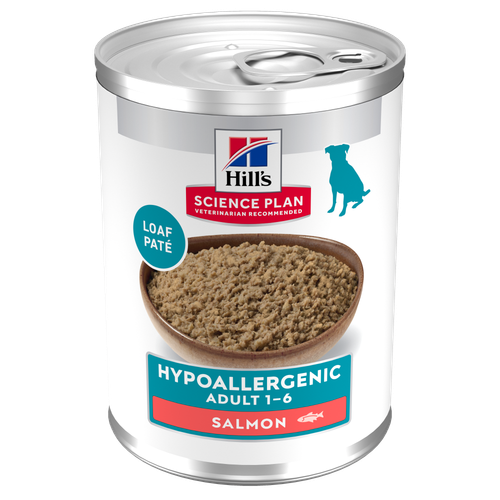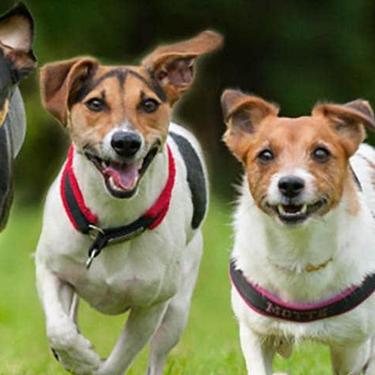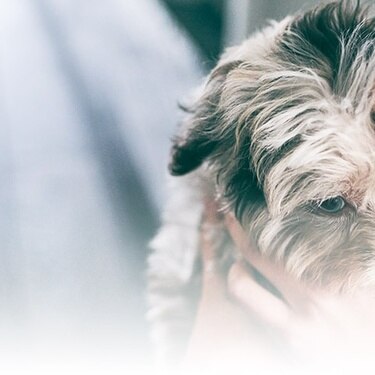
-
Find the right food for your petTake this quiz to see which food may be the best for your furry friend.Find the right food for your petTake this quiz to see which food may be the best for your furry friend.Featured products
 Puppy Food
Puppy FoodHill's Science Plan Puppy Multipack Wet Dog Food with Chicken & Beef are complete premium pet foods for growing puppies from weaning until 1 year old and for pregnant and nursing dogs. Your puppy will love these deliciously smooth and savoury minced loaves, formulated for balanced nutrition and overall health.
Shop Now Mature Adult Dog Food
Mature Adult Dog FoodHill's Science Plan Mature Adult Multipack Wet Dog Food with Chicken & Beef are complete premium pet foods for mature adult dogs from 7 years. Your dog will love these deliciously smooth and savoury minced loaves, formulated to deliver the appropriate amount of energy to support the needs of adult dogs.
Shop Now Adult Wet Dog Food with Beef
Adult Wet Dog Food with BeefHill's Science Plan Adult Multipack Wet Dog Food with Chicken, Beef & Turkey are complete premium pet foods for adult dogs from 1 year. Your dog will love these deliciously smooth and savoury minced loaves, formulated for balanced nutrition and overall health.
Shop NowFeatured products Adult Multipack Wet Cat Food with Beef, Ocean Fish & Chicken
Adult Multipack Wet Cat Food with Beef, Ocean Fish & ChickenTender chunks in gravy for cats, with high-quality protein to maintain lean muscle. With vitamin E and omega-3s & -6s for healthy skin and balanced minerals to support healthy vital organs.
Shop Now Light Adult Multipack Wet Cat Food with Chicken & Ocean Fish
Light Adult Multipack Wet Cat Food with Chicken & Ocean FishTender chicken chunks in gravy for cats, with L-carnitine and fewer calories for ideal weight management. Packed with high-quality protein, omega-6s, and vitamin E for shiny fur and healthy skin.
Shop Now Mature Adult Wet Cat Food with Chicken
Mature Adult Wet Cat Food with Chicken
Tender chicken chunks in gravy for mature adult cats. Made with easy-to-digest ingredients, high-quality protein for lean muscle maintenance and antioxidant vitamins C+E for optimal health.
Shop Now -
Dog
- Dog Tips & Articles
-
Health Category
- Weight
- Food & Environmental Sensitivities
- Urinary
- Digestive
- Joint
- Kidney
-
Life Stage
- Puppy Nutrition
- Adult Nutrition
- Senior Nutrition
Cat- Cat Tips & Articles
-
Health Category
- Weight
- Skin & Food Sensitivities
- Urinary
- Digestive
- Kidney
-
Life Stage
- Kitten Nutrition
- Adult Nutrition
Featured articles The Incredible Science Behind Your Pet's Microbiome
The Incredible Science Behind Your Pet's MicrobiomeLearn what your pet's microbiome is, how it contributes to your pet's gut and overall health, and why nutrition is important in maintaining healthy microbiomes.
Read More Show some love with wet foods: a great choice for pets with health issues
Show some love with wet foods: a great choice for pets with health issuesShow some love with wet foods: a great choice for pets with health issues.
Read More The Right Diet For Your Pet
The Right Diet For Your PetIn people, the right diet is very important. If you are eating the wrong way for your metabolism, activity level, age and lifestyle you could end up with health issues.
Read More -


Exercise is an important part of your dog's physical and mental health, just like yours. And although there are many fitting activities you can do together, running with your dog can be an excellent way to burn calories and relieve stress for both of you.
Lack of exercise is one of the most common reasons for the weight and behavioural problems many dog parents face. Without enough outlets to expend their energy, puppies and adult dogs can become bored, frustrated and destructive. Not only does chewing upholstery cause you major distress, but it can be dangerous for your pet. Wondering where to get started with your running partner? Look no further. Running benefits your dog in the same ways it benefits you – so don't be afraid to put your trainers on and hit the same roads and trails you'd jog on yourself.
Always remember that sniffing is a very important activity for dogs. Exploring and sniffing is their equivalent of you relaxing with a newspaper or catching up with all your friends’ latest news – it’s how they find out all the latest ‘dog gossip!’ If your dog likes running with you, that’s great, but make sure that the majority of their outside time involves calmer walks or other time outdoors in places where they have an opportunity to properly catch up on all their news!
What to bring on a run with your dog
Once you've decided to start, you'll want to make sure you have all the necessary items to keep both of you safe and comfortable. Be sure to check off the following every time you leave for a run with your buddy:
- A secure harness with adequate identification
- Extra water for them (remember, they need to hydrate, too)
- Doggie bags to pick up and dispose of any waste
- A sturdy lead, either hands-free or standard, that won't break should your dog get excited and change pace suddenly
- Treats when your dog needs extra calories on a long run
Whatever the weather…

Being aware of the weather is important. Dogs don't heat and cool their bodies like you do (for example, they do not sweat), so they can be more sensitive to extreme temperatures. If it's too hot, your dog could get heatstroke; too cold, and frostbite can set in. Some dogs love to be out whatever the weather, while some take one look at a puddle and slink off back to the settee. Some breeds of dog, such as the flat-faced breeds, can be very heat intolerant even when walking, so make sure you know what’s best given your dog’s own individual needs, and, when in doubt, consult with your veterinarian.
Before you begin, there are more personal precautions to take when running with your dog. First, you'll want to make sure running is something your dog actually wants to do! Not all breeds need much beyond a regular walk. A border collie or similarly active herding or working breed may love to join you for several miles, whereas a stockier lapdog probably won't want to move quite as quickly as you'd like. If running seems to be an enjoyable activity for both of you, though, you're ready to take the next steps.


Tasty Tips
Physical Ability
Perhaps just as important as the desire to run is the capability of your dog. Age plays an important factor when deciding how and when to run with them. For naturally large breeds, running long distances before adulthood is not recommended. This is because the bones and joints in your growing puppy are susceptible to injuries before they're fully developed. Even if your dog is old enough, a veterinary checkup prior to starting up any strenuous new physical activity is one of the best things you can do. Dogs are stoic animals and hide injuries and illnesses quite well from their pet parents. Your vet will be able to tell you whether it's safe for your dog to jog. If you notice your dog labouring or lagging behind, it is best to stop and let them rest or walk the rest of the way. Never force your dog to run with you.
If your dog is overweight and that is the reason you have decided to start running with them, be very mindful that they will likely be quite unfit, initially. Build up their stamina very gradually.
Starting running with your dog
Beginning to run with the go-ahead from your vet requires very little training. Basic obedience is usually all you need for a comfortable run together. Nonetheless, making sure your dog doesn't pull you around or weave in and out of your legs is an important safety measure for both of you; letting them lead the run can put your own muscles and joints at risk. You'll also want to make sure your dog can stop, sit, and stay should you need to wait at any traffic lights or cross crowded trails. Above all, start slow and work your way up to longer runs to avoid injury, just as you would if you were beginning to run on your own for the first time.
As we mentioned at the start, dogs love to sniff and explore. It’s unlikely that your running pace is going to be exactly perfect for your dog, so, where possible and safe, let them off the lead. Having good recall is essential for this, and it’s one of the most fundamental commands for a happy relationship with your dog. If they have excellent recall, it’s otherwise safe, and local regulations permit, they can have off-lead time, which most dogs love. They can stop if they smell something interesting and will easily catch up to you again. This gives them much more natural exercise and makes for a more relaxing time for both of you.
You'll notice that, as your dog gets into better shape, they’ll be able to go longer distances at faster paces. During your run, make sure to check your dog's feet for any torn pads or nails. Although they might start limping if they’re injured, they can sometimes be so happy to be out with you that, in the moment, they don’t notice or show it. It's up to you to make sure they’re safe during exercise.
If running with your dog becomes a regular part of your routine, you might also want to talk to your veterinarian about proper nutrition. Just like athletes, active dogs need more calories and varying foods than your average couch potato. Proper nutrition and exercise are paramount to keeping your dog healthy, and together they'll provide your best friend with a long, happy life.
FAQs
- Should all dogs be taken running? No. Dogs, like people, are all individuals and some like running, some don’t. Walks, off-lead exercise and chances to sniff and explore are more important. Also, talk to your vet about any medical conditions such as arthritis or heart disease that might make it detrimental to go running.
- When is the best time to run with my dog? In general, it’s best to exercise your dog in the early morning and late afternoon/evening. This avoids the heat of the day.
- Does my dog need special food if I take them running? Probably not, unless you’re doing a very high level of exercise. Your dog may just need a bit more of their normal food if they are expending more calories and already at a healthy weight. Regular weight and body condition checks with your vet are useful to adjust the amount you are feeding. If you find your dog is getting too thin on normal ‘life stage’ food, your vet may recommend a higher-calorie food.


Katie Finlay is a pet trainer who lives in Southern California. She has been working with dogs and their owners both in person and through her online content for over six years.
Related products

Hill's Science Plan Puppy Multipack Wet Dog Food with Chicken & Beef are complete premium pet foods for growing puppies from weaning until 1 year old and for pregnant and nursing dogs. Your puppy will love these deliciously smooth and savoury minced loaves, formulated for balanced nutrition and overall health.

Hill's Science Plan Hypoallergenic Adult Wet Dog Food with Salmon is a complete premium pet food for all adult dogs from 1 year. This savoury tinned loaf is specially formulated for dogs with delicate skin and stomachs. It features a single novel animal protein source and is grain-free.

Hill's Science Plan Adult Multipack Wet Dog Food with Chicken, Beef & Turkey are complete premium pet foods for adult dogs from 1 year. Your dog will love these deliciously smooth and savoury minced loaves, formulated for balanced nutrition and overall health.

Hill's Science Plan Mature Adult Multipack Wet Dog Food with Chicken & Beef are complete premium pet foods for mature adult dogs from 7 years. Your dog will love these deliciously smooth and savoury minced loaves, formulated to deliver the appropriate amount of energy to support the needs of adult dogs.
Related articles

Many human foods are dangerous to dogs. Read about 5 of the worst toxic food offenders that can kill your dog - and how much it takes to hurt them.

Learn effective tips for feeding a dog that's a picky eater and ensure proper nutrition for a finicky eater. Discover tips for pet parents at Hill's Pet UK.

Learn about the potential health risks of a raw diet for dogs and why they aren't the best option for your pup or you.

How, when and what to feed your new puppy is an important decision, learn more about the things to consider for feeding your puppy.

Put your dog on a diet without them knowing
Our low calorie formula helps you control your dog's weight. It's packed with high-quality protein for building lean muscles, and made with purposeful ingredients for a flavourful, nutritious meal. Clinically proven antioxidants, Vitamin C+E, help promote a healthy immune system.
Put your dog on a diet without them knowing
Our low calorie formula helps you control your dog's weight. It's packed with high-quality protein for building lean muscles, and made with purposeful ingredients for a flavourful, nutritious meal. Clinically proven antioxidants, Vitamin C+E, help promote a healthy immune system.

